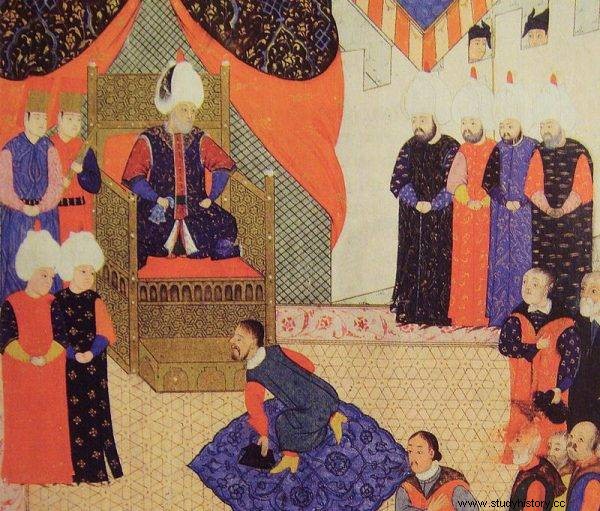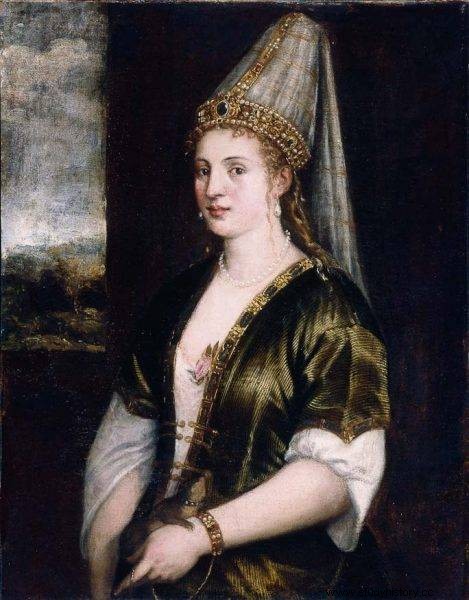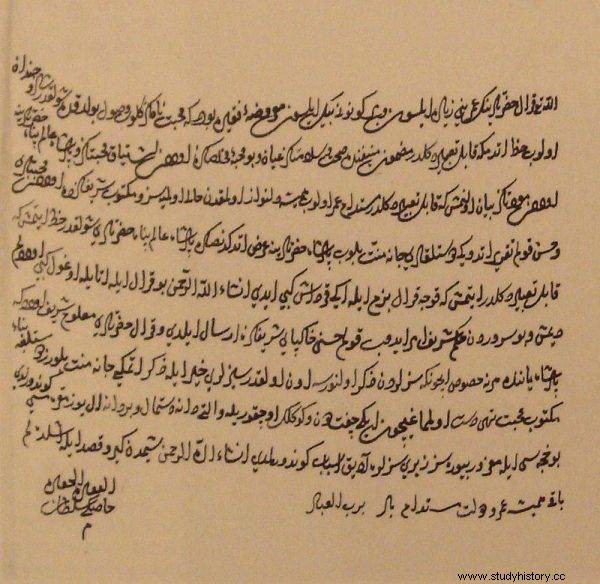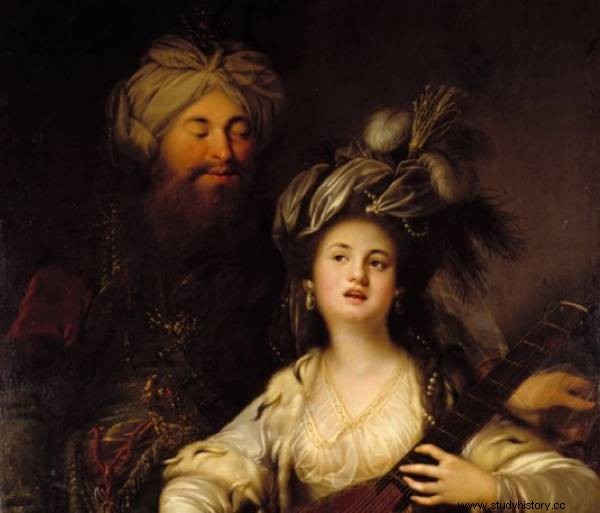The story of the relationship between Suleiman II the Magnificent and Hurrem known as Roksolana resembles a real fairy tale - as much romantic as it is full of intrigue and turmoil.
He - the mighty Padishah, "Lord of this time", descendant of a dynasty of rulers and conquerors, at which all Christian Europe trembled. She - a young girl kidnapped from home by invaders, forced to accept a foreign faith and customs.
He ruled the empire…
Suleiman, nicknamed "The Magnificent" in the West, was an outstanding ruler, diplomat and commander. With thirteen personally conducted war campaigns, he expanded the borders of the Ottoman Empire. He was feared in Christian Europe after the conquest of Belgrade in 1521, the victory at Mohacz in 1526 and the siege of Vienna in 1529.
He made peace with Sigismund the Old, who, as the first European ruler of the Catholic faith, decided to take such a step with a Muslim ruler. Both rulers, who called each other "brothers", wanted the latter not to spoil the political plans of the former. The Sultan did not want Sigismund to get involved in the war between Turkey and the Habsburgs. The Polish king, focused on the conflict with Moscow, did not have to worry about the southern border.

Suleiman, nicknamed "The Magnificent" in the West, was an outstanding ruler, diplomat and commander
Despite its failure at Vienna, the Ottoman Empire was in full bloom, and the defeat did not cast a shadow on the Padishah's glory. He was 35 at the time and a man in his prime. The circle of those closest to him included - apart from his mother, Ayşe Hafsa, whom he thought he was very important to - Grand Vizier of Pargali Ibrahim Pasha , his close friend, advisor and probably brother-in-law, as well as Hürrem, who already then bore him several children, including four sons, gaining respect and position.
For her, broke almost all the rules of the harem protocol, elevating the darling beyond and above all women in the harem except her mother. In the poems and letters posted during the war campaigns, Suleiman called her "the sultan of his heart", "his life", "love with a happy face", "spring", "shining moon" or "queen". She, on the other hand, expressed a constant longing and impatiently waited for the return of her beloved.
… and she did
"He is inaccessible, fierce, haughty, one of the chief creators of the Ottoman power, one of the greatest monarchs of his era, with whom Francis I sought protection, with whom Charles V sought consent, gives him the power of a liberated giaur concubine "- wrote about Hürrem over a hundred years ago in the" Historical Quarterly "Szymon Askenazy.
What was the one who won the heart of the mighty Padishah like? It is difficult to judge with certainty today, but an image of a fairly ordinary girl emerges from the portraits and accounts of the time. She was of short stature, "young, but not classically beautiful, although shapely and filigree" as described by the Ambassador of Venice, Pietro Bragadin. When around 1534, probably after the death of his mother, the sultan married his favorite, as widely described by foreign diplomats, Hürrem triumphed and it seemed that her position could not be threatened any more.

An image of a fairly ordinary girl emerges from the portraits and accounts of those times.
Many historians claim that her conspiracy executed the heir to the throne Mustafa, which paved the way for her sons to power, as well as the Grand Vizier Ibrahim, who was vehemently opposed to her influence and position. An additional flavor is the fact that perhaps Ibrahim himself bought a young slave from Russia at the market and gave it to his ruler.
Laughing Slave
We have at worst, residual, and at best incomplete knowledge of the women who ended up in the Sultan's harem as captives from foreign lands and gifts from dignitaries. Sultan concubines and the favorite were carefully guarded, and only rumors and gossip could penetrate the ears of Western diplomats or travelers. For the few inhabitants of the Sultan's harem, who occupied - even for a moment - an important position in it, becoming mothers of princes and princesses, these rumors, scandals and intrigues brought publicity.
One of them is the famous Hürrem. We don't know exactly when or where she was born, possibly from Red Ruthenia. According to Polish accounts, she was the daughter of a pope from Rohatyn, from where she was kidnapped by the Tatars, bought by the Grand Vizier Ibrahim and given to Suleiman around 1520. Roksolana is not a name, but a nickname that simply means a Russian girl. We know that bore Suleiman's first son in 1521, opening her way to the top of the harem hierarchy.

Roksolana's letter to the Polish king Zygmunt II August
The French ambassador to Busbecq claimed that she kept Suleiman's love "through amorous tricks and magical practices." However, the intelligence, cleverness and cheerful character to which she owed her nickname, meaning "Joyful", "Laughing" seem more likely. Using her talents, shortly after joining Suleiman's harem, she managed to eliminate the Mâhidevrân called Gülbahar ("Spring Rose"), the Sultan's favorite and mother of Mustafa.
The Venetian ambassador described the scandal that broke out in the harem when the ladies pounced on each other with fists and nails. Scratched on her face, Hürrem then refused to appear before the Sultan, explaining that he could not see her in such a state. Suleiman dismissed Gülbahar, who had left Manisa with her son.
The jealous lover of the Sultan
The Venetian ambassador Bragadin described that Hürrem was indescribably jealous and that when the sultan received young, beautiful slaves as a gift, she fell into a rage out of fear of competition and forced her to send potential competitors. No wonder - she knew it from her own experience. Apparently, over time, she persuaded the Sultan to marry the most beautiful concubines to dignitaries so that their beauty would not be wasted thus protecting against possible competition.
After the fire of the Old Seraglio in 1541, she obtained Suleiman's consent to move to the new palace, today known as Topkapı, where she could pursue her political ambitions, be close to the Sultan (she did not go to the province with any of her sons, as it was in the habit) and look after the interests of their children.
Was the famous Hürrem a calculating and cold snake who fell in love with and then swept one of the most powerful rulers of the era? Or rather, an ambitious, intelligent girl who found herself in another world and made herself comfortable in it? Well, those days were probably inclined to the first opinion, today we can look at it differently.
Remember that Suleiman was not a weak, prone to manipulation, such as his son and successor, Selim II known as the Drunkard, dominated by Nurbanu, his favorite concubine, and then his wife. With almost half a century of reign, Suleiman had his beloved with him for over thirty years, sharing with her sorrows and joys, exchanging thousands of letters, poetry and love confessions . Hürrem was not only the mother of his children - she was the confidant of his concerns, the closest person to whom he sought advice and consolation.
Love or politics
We do not know if she achieved this unique position thanks to her cleverness or, simply put, was the perfect "soul mate" for a loved one who could not imagine his life without her. It is worth emphasizing that, contrary to tradition, Hürrem lived in a lasting relationship with the Sultan, giving him more children - when, as usual, after giving birth to her son, the concubines were dismissed and replaced by others. None of them returned to the Sultan's bedroom after fulfilling their role for the dynasty. As Leslie Peirce emphasizes in the biography of the Sultana:
During the entire reign of Suleiman no other concubine bore him a child . Even if he slept with other women during his absence in Istanbul or during Roksolana's subsequent pregnancies, care was taken not to ensure that these contacts did not result in offspring. Five children with one concubine in seven years and none with another concubine - it was a revolutionary departure from tradition. The Turkish Sultan has become a monogamous!

Suleiman and Hürrem lived together for almost forty years.
Maybe the ambitious, cunning and unwavering Hürrem just made the best of her position? Or maybe the feeling was really so great and lasting that it tied the couple together for many years, against the customs and protocols?
Suleiman and Hürrem lived together for almost forty years. She died on April 15, 1558 after a long illness, his death reached eight years later during the siege of Szigetváru in Hungary. They rested in Istanbul, in a mausoleum built in the courtyard of the Suleiman mosque.
Literature:
- Askenazy, Sz., Roxolana's Letters , "Kwartalnik Historyczny", year 10 (1896), pp. 113-306.
- Bukowczan-Rzeszut, A., The Kitchen of Kings , Krakow 2020.
- Clot, A., Suleiman the Magnificent and his wonderful century , crowd. G. Majcher, Warsaw 2017.
- Halman, Talat S., Suleyman the Magnificent Poet , Istanbul 1987.
- Łątka, J.S., Suleiman II the Magnificent - conqueror, ruler, reformer , Warsaw 2004.
- Peirce, L., Roksolana - ruler of the East , crowd. M. Studencki, Krakow 2018.
